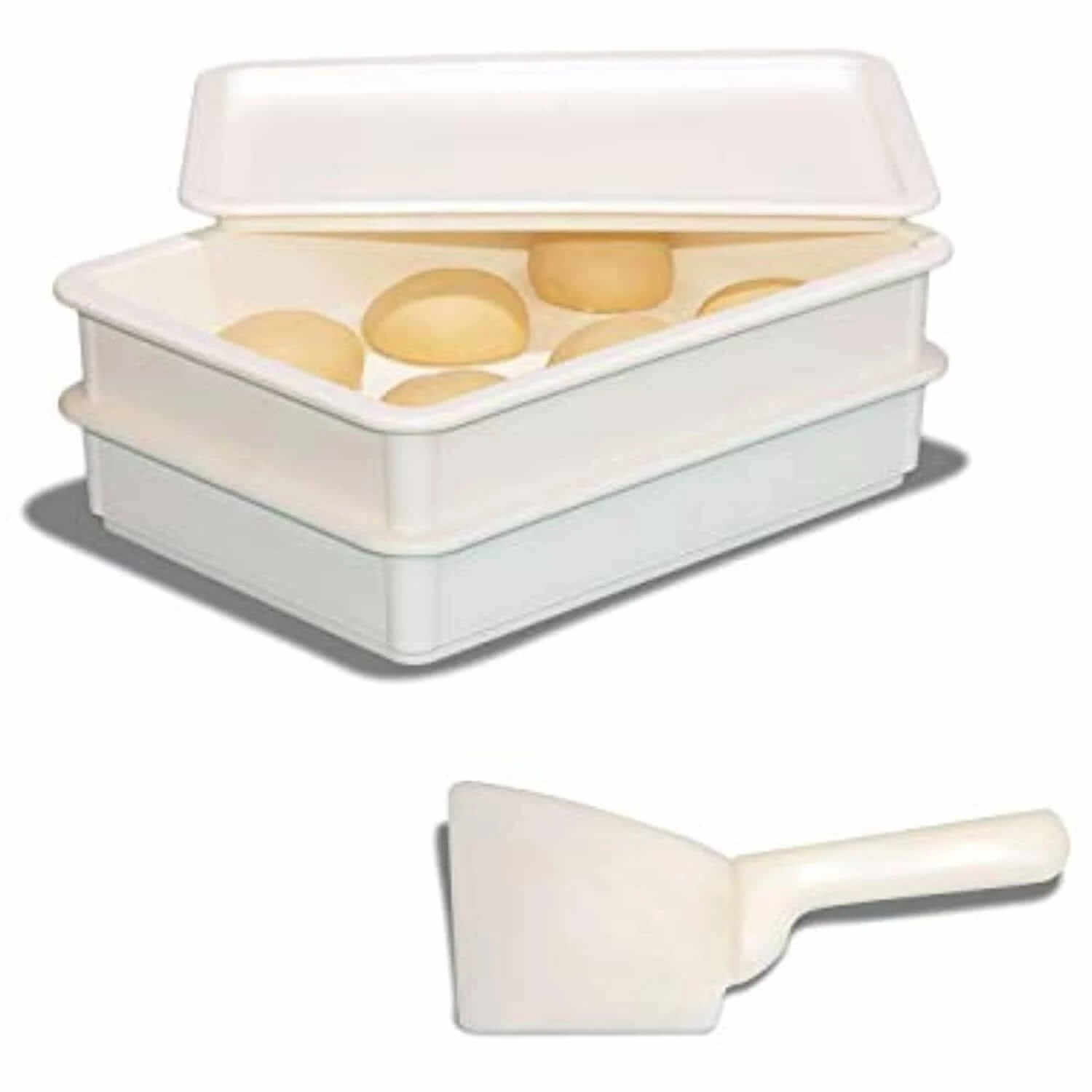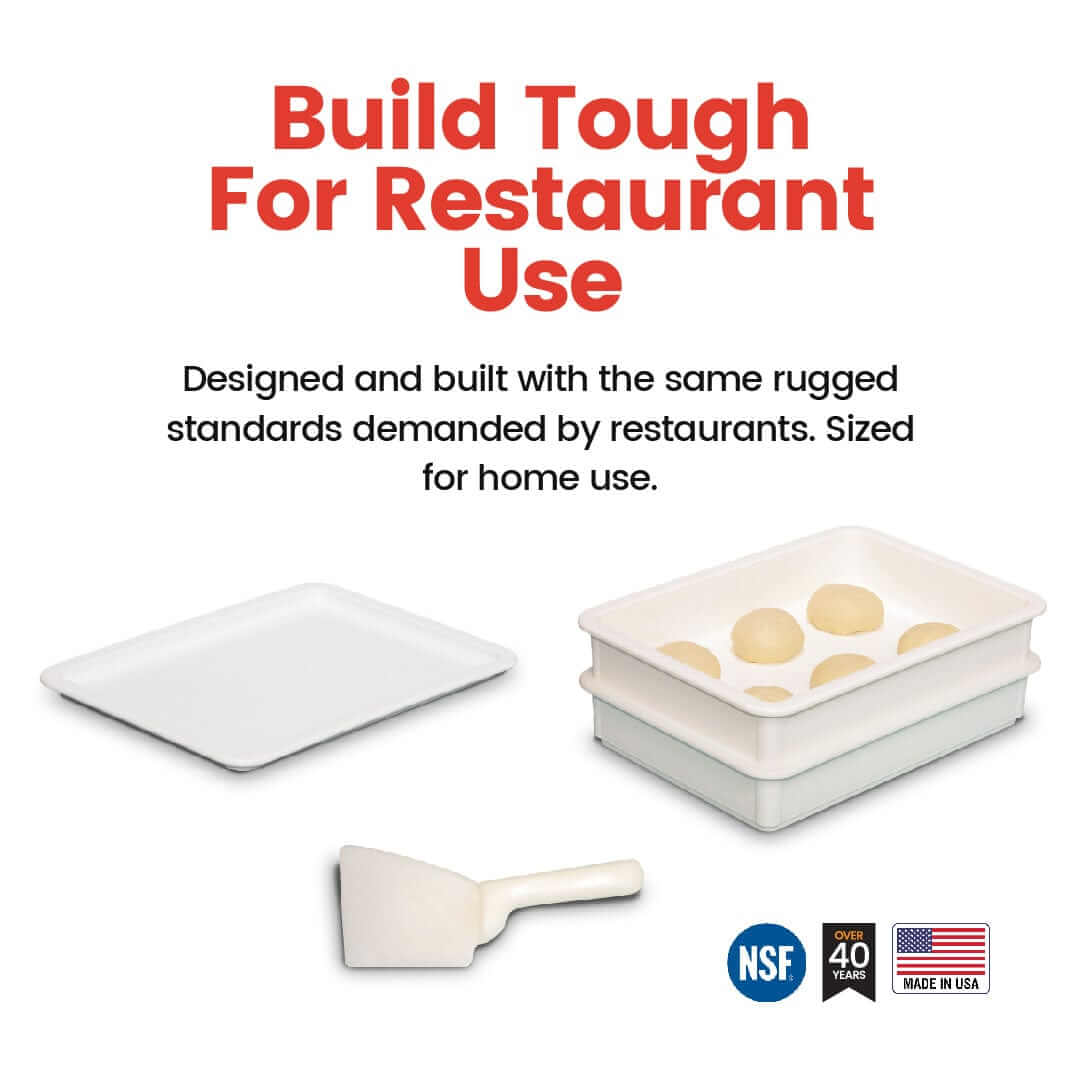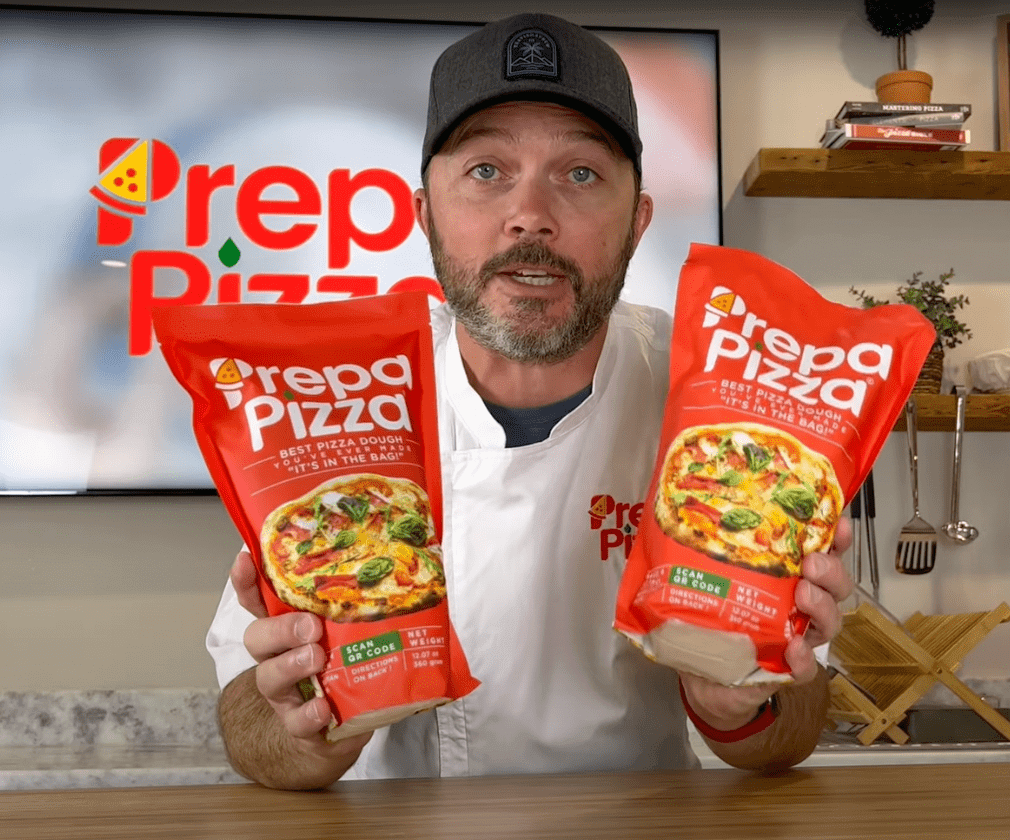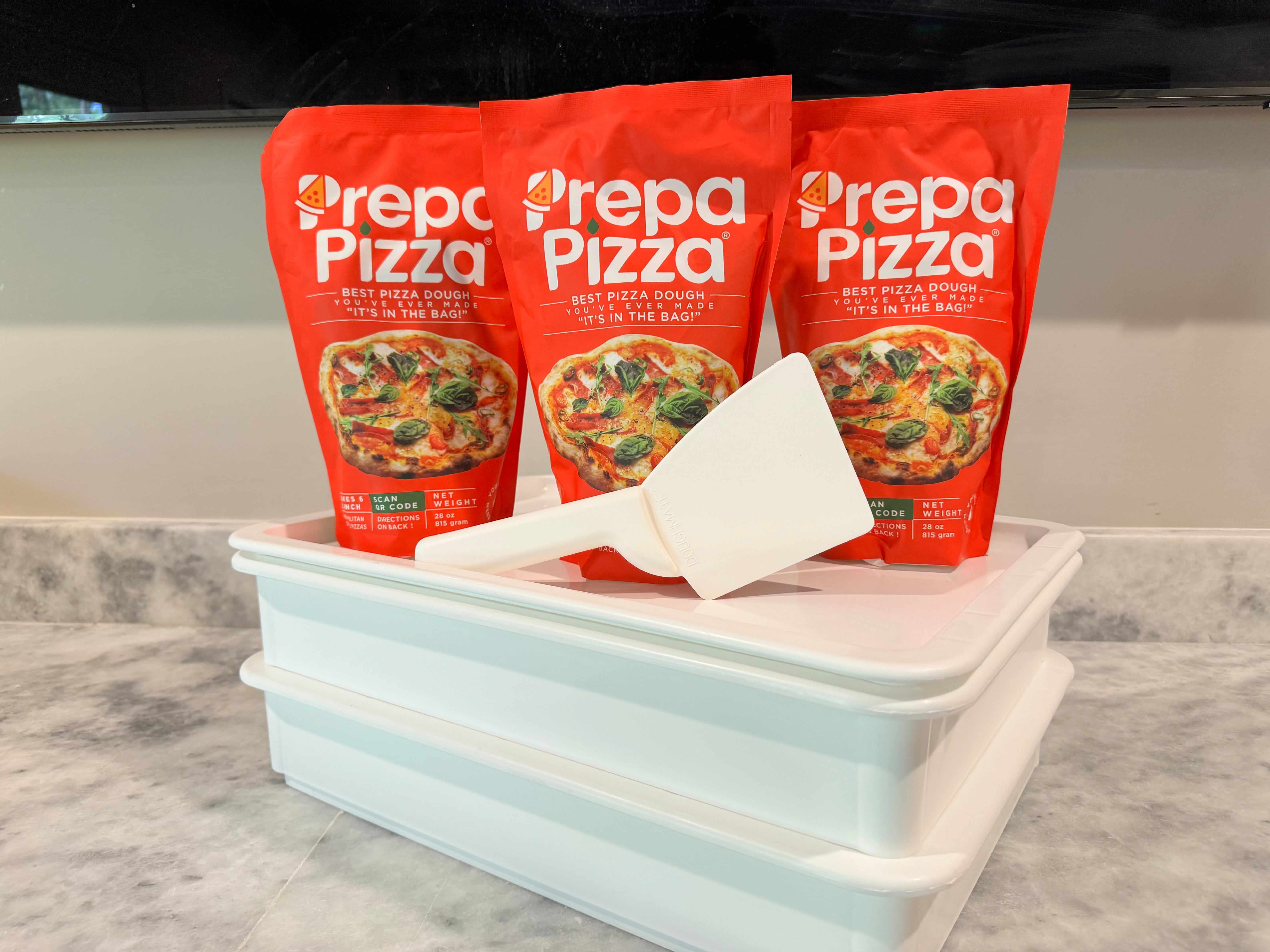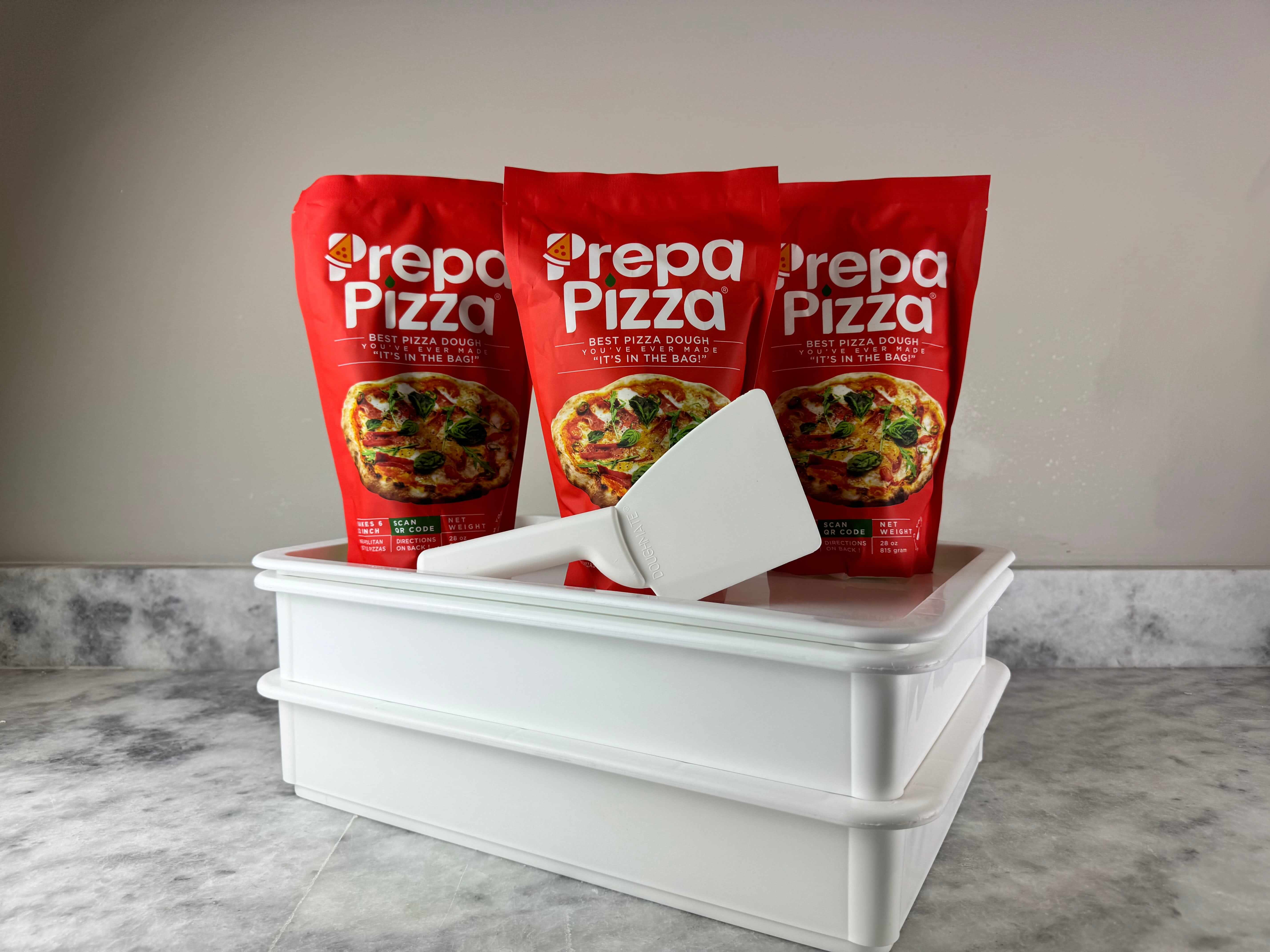
How to Bake Pizza on Cast Iron for Perfectly Crispy Crust Every Time
Baking pizza on cast iron gives you a crisp, golden crust and a chewy, perfectly cooked center that’s hard to achieve with other methods. The key to great cast iron pizza is starting with high-quality dough, like Prepa Pizza’s premium premade pizza dough, which is designed for easy handling and restaurant-quality results. Using cast iron ensures even heat distribution, delivering that ideal combination of crunch and tenderness every time you bake.
With Prepa Pizza’s premade dough, you skip the hassle of making dough from scratch without sacrificing quality. You can easily shape the dough to fit your skillet, add your favorite toppings, and cook it on your stovetop or in the oven for quick, satisfying pizza nights. Try it yourself and experience how simple it is to make a delicious, homemade pizza that rivals your favorite pizzeria.
For those who want an effortless way to enjoy cast iron pizza, check out Prepa Pizza’s dough kit here and elevate your pizza-making process with premium ingredients and a perfect crust every time.
Why Bake Pizza on Cast Iron
Using a cast iron skillet for baking pizza offers distinct advantages in heat management, crust texture, and versatility. When paired with quality dough like Prepa Pizza’s premade dough, you get consistent results that elevate homemade pizza to restaurant-caliber quality. You can find Prepa Pizza’s dough here.
The strength of cast iron lies in its cooking performance and how it interacts with your dough. This makes the cast iron skillet pizza experience unique compared to other pans or baking methods.
Heat Retention and Even Cooking
Cast iron excels at holding and evenly distributing heat, which is critical for baking pizza. Once heated, a cast iron pizza pan maintains a steady temperature, preventing cool spots that cause uneven baking or soggy patches in your crust.
This heat consistency ensures that toppings cook at the same rate as the crust, reducing the risk of underdone dough or burnt toppings. A well-preheated cast iron skillet creates a surface similar to professional pizza ovens by delivering high, even heat quickly.
If you use Prepa Pizza’s premade dough, you’ll notice it responds well to this heat, developing a perfect balance of crispiness and chewiness. This even heat control is harder to achieve with standard baking sheets or glass pans.
Texture and Crust Benefits
A cast iron skillet pizza crust typically comes out both crispy and chewy—qualities many look for in pan pizza. The heavy metal sears the dough’s bottom quickly, locking in moisture inside for a tender interior.
The skillet’s seasoned surface naturally prevents sticking, so you use less oil while still achieving a golden, crunchy crust. You avoid the sogginess that sometimes happens with thinner or less sturdy pans.
This texture difference is especially noticeable with dough like Prepa Pizza’s, which has a blend of ingredients designed for optimal rise and structure. The skillet complements that, producing a crust that holds up under toppings without becoming dense or doughy.
Comparing Cast Iron to Other Pans
Compared to typical baking trays or glass pans, a cast iron skillet offers superior heat retention and transfer. While a standard pan can draw heat away and create uneven cooking, a cast iron pan creates a mini heat oven around the dough.
Non-stick or aluminum pans often lack the mass to maintain temperature during baking, which can result in undercooked or uneven crusts.
Cast iron is also versatile—you can start your cast iron skillet pizza on the stovetop to crisp the bottom, then transfer it to the oven for baking. This hybrid approach is not possible with many other types of pans.
Using Prepa Pizza’s premade dough in a cast iron pan amplifies these benefits, making it easier to achieve professional-quality pan pizza at home.
Choosing and Preparing Your Cast Iron Skillet
Your cast iron skillet is the foundation for making great pizza, so selecting the right one and keeping it well-seasoned matter. Using Prepa Pizza’s premade dough, which delivers consistent quality, will make the process smoother and help you focus on cooking techniques. Proper preparation of your cast iron pizza pan will ensure an even bake and prevent sticking.
Selecting the Right Cast Iron Pan
Choose a pan that’s 10 to 12 inches in diameter—large enough for a personal pizza but manageable for even heating. A skillet with higher sides around 2 inches or more allows you to build a thicker crust or deep dish style.
Look for pans that are pre-seasoned for convenience, but a well-maintained older skillet works just as well. Avoid pans with cracks, rust, or warped bases since these can cause uneven heat distribution and sticking.
A cast iron pizza pan with a flat base and slightly sloped sides delivers the best crisp crust. The heavy weight of cast iron provides excellent heat retention, key to browning the dough properly. Keep in mind that skillets with smooth cooking surfaces make dough release easier.
How to Season and Maintain Your Skillet
Seasoning your skillet creates a natural non-stick surface crucial to prevent pizza dough from sticking. Start by thoroughly cleaning the pan with hot water and a stiff brush. Avoid soap, which can strip seasoning.
Coat your skillet thinly and evenly with a high smoke-point oil like flaxseed, grapeseed, or vegetable oil. Heat it upside down in the oven at 450°F (232°C) for one hour, then let it cool completely inside the oven. This polymerizes the oil, building a durable coating.
Regularly oil your skillet before each pizza session, applying a thin layer of olive oil, especially around the edges. Cleaning immediately after use with hot water and a non-abrasive sponge prevents residue buildup. Never soak or put your cast iron pizza pan in the dishwasher.
Using Prepa Pizza’s premade dough eliminates variability and reduces sticking risks when paired with a properly seasoned cast iron skillet, delivering a consistently crisp and delicious pizza. For detailed instructions on seasoning, visit Prepa Pizza Dough Kit.
Cast Iron Pizza Dough and Crust Methods
For a successful cast iron pizza, choosing the right dough and mastering crust techniques is essential. How you prepare and handle your dough affects the crust’s texture, from crispy edges to a chewy interior.
Homemade vs. Store-Bought Dough
You can use either homemade pizza dough or high-quality premade dough, depending on your time and preference. Premade dough from Prepa Pizza is a great option, made with restaurant-quality ingredients to simplify your process while delivering excellent results. Their Prepa Pizza Dough Kit offers consistent texture and flavor without sacrificing the homemade feel.
Homemade dough allows full control over ingredients and fermentation but requires more effort and time. Store-bought dough, especially from quality providers, eliminates guesswork and can speed up your pizza-making without compromising the authentic pan pizza experience.
Creating a Crispy Pizza Crust
A cast iron skillet helps you achieve a pizza crust that is crispy on the outside and tender inside by distributing heat evenly and retaining high temperatures.
To get a crispy crust:
- Preheat your skillet well before adding the dough.
- Use a bit of oil to create a golden, crunchy bottom.
- Bake in a very hot oven (450-500°F) on the lower rack to encourage a chewy puff inside while crisping the exterior.
This method produces a focaccia-like crust with the characteristic chewiness and crunch that makes cast iron pizza distinct.
Dough Stretching and Proofing Tips
With cast iron, shaping the dough is easier because you don’t have to stretch it perfectly round. After your dough is proofed twice, simply press or pat it into the skillet.
Key points for proofing:
- Allow the dough to rise until it doubles in size.
- For best results, proof the dough twice to develop flavor and texture.
- Avoid overstretching; lightly pressing helps maintain air pockets, giving the crust an airy interior.
If using Prepa Pizza dough, follow their recommended proofing steps for optimal texture, making your cast iron pizza crust tender yet crisp without complicated handling.
Step-by-Step Guide: How to Bake Pizza on Cast Iron
Using cast iron to bake pizza lets you achieve a crispy crust and evenly cooked toppings. Starting with quality premade dough, like Prepa Pizza’s premium dough, sets the foundation for a restaurant-quality pizza. Proper skillet preparation, layering of sauce and cheese, and precise baking times are key to getting perfect results every time.
You’ll need olive oil, pizza sauce, mozzarella cheese, and your favorite pizza toppings to build your pizza. Attention to temperature and timing during baking ensures the dough cooks through while the cheese melts beautifully.
Preheating the Skillet
Begin by placing your 12-inch cast iron skillet in a cold oven. Preheat the oven to 500°F (or the highest your oven can achieve) and allow the skillet to heat for at least 20 minutes. This ensures even heat retention and a crispy crust as the dough hits the hot surface.
Before shaping the dough, drizzle 2 tablespoons of olive oil in the skillet. This prevents sticking and adds a subtle flavor to the crust’s edge.
Using Prepa Pizza’s premium premade dough here lets you skip rising and shaping from scratch, saving time and providing consistent texture.
Assembling and Topping the Pizza
Once preheated, carefully remove the skillet from the oven. Lightly press your stretched or rolled Prepa dough onto the base, ensuring it covers the pan evenly but not necessarily up the edges. The dough will puff naturally during baking.
Spread a thin, even layer of pizza sauce over the dough, avoiding saturation to keep the crust from getting soggy. Next, sprinkle shredded mozzarella cheese generously to cover the sauce.
Add your preferred toppings, such as sliced vegetables, cooked meats, or fresh herbs, but don’t overload. Too many toppings can weigh down the dough and prevent even cooking.
Baking and Timing Techniques
Slide the skillet back into the oven on the bottom rack to take advantage of the intense heat from below. Bake at 500°F for 12 to 15 minutes. Check at 10 minutes to monitor the crust’s crispness and cheese melting.
The high heat creates a chewy interior with a crispy exterior, thanks to the skillet’s excellent heat retention. If the crust edges brown too quickly, you can loosely tent the pizza with foil.
Avoid opening the oven frequently, as heat loss lengthens cooking time and may affect texture. The cheese should be bubbly and lightly browned when done.
Finishing Touches and Serving
Once out of the oven, let the pizza sit in the skillet for 2-3 minutes before slicing. This helps the cheese set slightly, making it easier to cut without toppings sliding off.
You can brush the crust edges with a bit more olive oil or garlic butter for additional flavor and shine.
Use a sharp pizza cutter and serve directly from the skillet or transfer to a cutting board. The crust will be crispy underneath while soft and chewy inside.
Prepa Pizza’s dough kit ensures that every batch has consistent, restaurant-quality results with minimal prep, letting you focus on toppings and baking techniques.
Sauce, Cheese, and Topping Ideas
Choosing the right sauce, cheese, and toppings can elevate your cast iron pizza from good to exceptional. Focus on combinations that complement the crispy, caramelized crust you get when baking with Prepa Pizza’s premium premade dough, which uses quality ingredients for consistently great results. You can start with classic options and then experiment with bold flavors or specialty styles.
Classic Pizza Sauce and Alternatives
For a traditional base, use a rich pizza sauce made with crushed tomatoes, garlic, dried oregano, and a pinch of salt. You can apply store bought pizza sauce for convenience, but enhancing it with fresh herbs like basil or a sprinkle of pizza seasoning can boost flavor.
If you prefer alternatives, consider a garlic-infused olive oil base or a white sauce such as béchamel or ricotta spread. These provide a creamy contrast that pairs well with mozzarella cheese. Even pesto can serve as a bright, herbal base, especially if you want to add fresh basil on top later.
Best Cheeses for Cast Iron Pizza
Mozzarella cheese is the essential choice for meltability and texture. Use whole milk mozzarella for a gooey, stretchy melt that crisps nicely at the edges of your skillet pizza. Combining it with shredded parmesan cheese adds sharpness and a golden finish.
Feel free to mix in provolone or fontina for extra depth of flavor. Avoid low-moisture cheeses alone, as they won’t create the ideal stretch or melt. Using a blend of mozzarella and parmesan also helps balance creaminess with a slightly nutty bite, complementing your pizza sauce perfectly.
Creative Pizza Toppings
You can take toppings all the way to the edges when cooking in a cast iron skillet, so load your pizza with colorful, fresh ingredients. Standard favorites like pepperoni and red onion work well, especially when paired with fresh basil scattered on top after baking.
Other excellent options are sautéed mushrooms, roasted peppers, or olives for more complexity. For a burst of freshness, add arugula or baby spinach after baking. Remember to consider textures; crispy bacon or caramelized onions add sweetness and crunch that contrast nicely with melted cheese.
Specialty Styles: Taco Pizza and More
For something unique, try a taco pizza with seasoned ground beef, cheddar cheese, diced tomatoes, shredded lettuce, and a drizzle of sour cream after baking. Use taco seasoning on your meat to replace standard pizza spices.
You can also experiment with a white pizza topped with garlic, ricotta, spinach, and sliced mushrooms or a Margherita style using your premium premade dough, fresh mozzarella, tomato sauce, and fresh basil leaves. Specialty styles expand the cast iron pizza’s appeal by combining bold flavors with its signature crispy crust.
Explore how these variations can maximize your enjoyment using the versatility of Prepa Pizza’s premade dough available at https://www.prepapizza.com/products/prepa-pizza-dough-kit?atid=ASKIZXfltwWZPVrz7efsK3EbTcxmqi.
Common Mistakes and Troubleshooting
When baking pizza on a cast iron skillet, getting the crust right and avoiding sticking are the biggest challenges. Using quality dough like Prepa Pizza’s premium premade dough, you can reduce many common issues. Preparing your dough at room temperature and proper skillet use will greatly impact results.
Using Prepa Pizza’s ready-to-use dough from their Pizza Dough Kit ensures you start with a consistent base made from quality ingredients. This makes managing heat and texture more predictable in your cast iron skillet pizza baking.
Avoiding Undercooked or Burnt Crusts
A common pitfall is uneven cooking, where the crust burns before the toppings are done or remains doughy. To prevent this, preheat your cast iron skillet on medium heat to ensure even warmth.
Avoid overly high heat, which can burn the crust quickly. Instead, start with a moderately hot pan and finish cooking the pizza in the oven for even baking.
Also, letting your dough rest at room temperature before shaping helps it cook more evenly. Cold dough can stay undercooked in the middle or cause uneven crust texture.
Preventing Sticking and Uneven Cooking
Not using enough oil is the primary cause of dough sticking to the skillet. Generously coat the pan with a high-smoke point oil before adding the dough.
Make sure your cast iron skillet is well-seasoned, as this natural non-stick layer aids in releasing the crust once baked.
If the skillet isn’t hot enough when adding dough, the crust can stick. Always confirm the pan is hot but not smoking. Moving the dough slightly after placing it helps you see if it has begun to crisp and release.
Best Practices for Consistent Results
Use Prepa Pizza’s premade dough to ensure uniform quality and ease of handling, saving time and effort. Let the dough rest out of the fridge for at least 30 minutes before cooking.
Heat your cast iron skillet enough to create a crispy crust but avoid excessive heat that burns. Use a combination of stovetop and oven baking to control crust texture and ensure toppings melt evenly.
Apply oil or cooking spray to prevent sticking and experiment with a quick test pizza to calibrate heat and cook times for your specific oven and skillet. Keep dough thickness consistent for uniform cooking too.
Frequently Asked Questions
Baking pizza in a cast iron skillet requires the right temperature, proper dough handling, and preheating techniques to achieve a crispy crust and well-cooked toppings. Using high-quality premade dough, like the one from Prepa Pizza, can simplify the process and improve your results. You can explore their premium pizza dough kit for reliable dough quality.
Using their restaurant-quality dough helps you focus on the cooking method and toppings rather than dough preparation. The following answers cover key baking temperatures, skillet preparation, making pan pizza with store-bought dough, and popular recipe variations.
What is the best temperature to bake pizza in a cast iron skillet?
The ideal baking temperature ranges between 475°F and 500°F. This high heat helps create a crispy, golden crust while evenly melting the cheese and cooking the toppings thoroughly.
Preheating your oven and skillet to this range ensures you get that restaurant-quality crust every time.
Can you make deep dish pizza in a cast iron skillet, and how?
Yes, a cast iron skillet is perfect for deep dish pizza. Use enough oil or butter to coat the pan, press your dough into the skillet including the sides for a thick crust.
Add sauce, cheese, and toppings, then bake at high heat around 475°F to 500°F until the crust is golden and cooked through.
What are the steps to making a pan pizza in a cast iron skillet using store-bought dough?
Start with Prepa Pizza’s premade dough for reliable texture. Lightly oil your skillet, press the dough evenly across the base and sides, add sauce, cheese, and toppings.
Preheat the oven and skillet, then bake at 475°F to 500°F for 12-20 minutes, depending on crust thickness, until the cheese bubbles and crust is crispy.
How do you prevent dough from sticking when making pizza on a cast iron surface?
Apply a thin but even layer of oil or melted butter on your skillet before placing the dough. This creates a non-stick barrier.
You can also dust the skillet lightly with flour or cornmeal to reduce sticking further while adding slight texture to the crust.
Does baking pizza in cast iron require preheating the skillet, and if so, how do you do it?
Yes, preheating is crucial for a crispy crust. Place your empty cast iron skillet in the oven during preheating at 475°F to 500°F for 10-15 minutes.
Carefully remove it to add dough, then return the skillet to the oven to bake. This ensures the pan is hot enough to start cooking the crust immediately.
What are some variations of cast iron skillet pizza recipes?
You can experiment with toppings like classic margherita, BBQ chicken, or vegetables. Some recipes use a thicker dough for a focaccia-like crust, while others keep it thinner and crispier.
Adding different cheeses, herbs, or sauces helps customize your pizza. Using Prepa Pizza's quality dough lets you explore these variations with consistent results.




